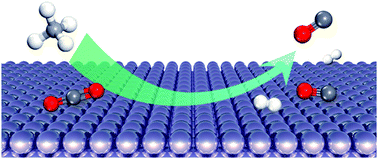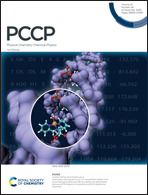Mechanistic insight into methane dry reforming over cobalt: a density functional theory study†
Abstract
Cobalt-based catalysts are a potential candidate among non-noble metal catalysts in dry reformation of methane (DRM), while the detailed mechanism of the DRM reaction is still largely unknown. In this contribution, the rather complicated reaction network for DRM is explored by density functional theory calculations. The most favorable adsorption structures of all species involved in the DRM reaction over Co(0001) have been identified. For CO2 activation, its direct dissociation to generate CO and O is the dominant reaction pathway. For CH4 direct dissociation, CH dehydrogenation into atomic C and H is the rate-determining step (RDS). It is predicted that the CH is the most abundant species among CHx (x = 0–3) over Co(0001). O acts as an oxidant and reacts with CH to produce CHO, and subsequently, CHO decomposes into CO and H. Atomic C may directly react with O to produce CO, or be oxidized by OH to COH, followed by the COH decomposition to CO and H. Thus, three possible pathways for DRM over the Co(0001) surface are proposed in our study, and the oxidation step is suggested as the RDS. The dominant route is identified as CH4 successive dissociation into CH, and CH oxidizing by O to form CHO, then CHO decomposition to CO and H.



 Please wait while we load your content...
Please wait while we load your content...